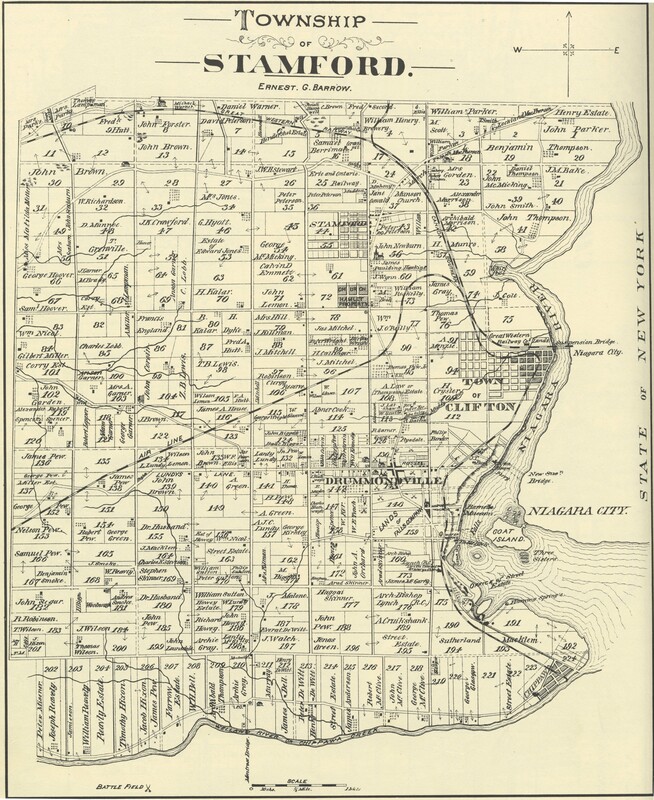Amalgamation
The Town of Clifton was incorporated on June 19, 1856, when the Village of Clifton and the Village of Elgin amalgamated. The new town had two thousand inhabitants and Gilbert McMicking was elected as its first mayor. The town developed rapidly. Much construction took place including a market square, several churches, a school, and a town hall. There were fourteen grocery stores and twenty saloons and hotels. Most significantly, Clifton was the eastern terminus of the Great Western Railroad. This was the main source of employment for its citizens. Samuel Zimmerman's death in 1857 halted many of the town's plans and left the town with financial problems.
In 1881, the Town of Clifton was renamed the Town of Niagara Falls by a special Act of Parliament. At this time, the town's population was just over 2600. The following year the Village of Drummondville, a small settlement established in 1831 in the area of Portage Road and Lundy's Lane (present-day Main and Ferry Streets), was incorporated as the Village of Niagara Falls (South). As the two communities grew, it became apparent that the amalgamation of the Town of Niagara Falls and Village of Niagara Falls made sense and would be mutually beneficial. On January 1, 1904, the City of Niagara Falls was formed.
Another amalgamation took place in 1963 when the City of Niagara Falls and Stamford Township merged. The new City of Niagara Falls now included the entire area of the old Township of Stamford, and the City's population increased from 22,000 to 54,000.
From its humble beginnings, the Village of Clifton had evolved into a sizeable city. Although the village no longer exists and many of its early landmarks are gone, the Clifton Hill tourist district in Niagara Falls still bears the village name and serves as a reminder of the area's early history.
